Foxtel dazzled and impressed audiences with its 2023 upfront presentation at Sydney’s new Allianz Stadium last Thursday.
Foxtel introduced an advertising tier to BINGE, increased investment in Foxtest, and revealed the slate of new and returning programs for the new year ahead.
Mediaweek spoke to four agency figures who shared their thoughts on Foxtel’s “game-changing” announcements, the investment in prime-time content and what it means for advertising budgets.
Exciting selling points
Lucy Formosa Morgan, MAGNA Global’s managing director, lauded Foxtel for their presentation for selling their thinking and approach in an evolving and competitive SVOD arena.
Formosa Morgan said it was good to see Foxtel shift their thinking on managing linear TV audience decline and growing SVOD/BVOD competition, particularly going into a tough economy next year as consumers rationalise subscriptions.
“The big news was the announcement of a new ad-funded offering for Binge in early 2023 to go head-to-head with Netflix and Disney+’s ad-supported models. They weren’t shirking away from the impact these two newer players will have on the ad market,” she said.
Formosa Morgan noted the investment in ad tech and FoxTest as another selling point, adding that it had delivered great results and analysis this year.
“I know from a Mediabrands perspective, we worked very closely with their team to evaluate outcomes to complement the work we’ve been doing internally for the last few years on impact quality and attention and are very excited to take this analysis out to our clients shortly,” she added.
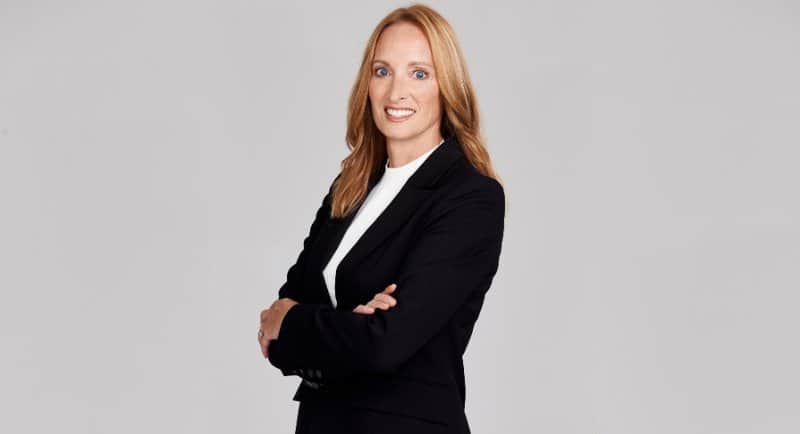
Lucy Formosa Morgan
Mat Linnett, EssenceMediacom Sydney investment partner, praised Foxtel for its slick presentation in the newly launched sporting arena. He called it the perfect backdrop to the theme “Game Changed”.
Linnett noted that Foxtel succeeded in outlook in terms of finances, subscriber growth and refreshing its perception from old-school pay-TV business to a tech streaming player.
“The three key ‘Game Rules’ of watchability, connectivity and useability set up a clear framework for the night’s presentation and provided an avenue for each of Foxtel’s main focal areas of content, tech, data, experimentation and working better with advertisers,” he said.
In addition to programming announcements and continued investment in local productions, the most significant announcement to Linnett was advertising on Binge.
“This somewhat inevitable play now truly consolidates Foxtel’s offering to the advertising market and garnered the biggest round of applause for the night,” he said.
“Overall, Foxtel showed they are ready for the new decade of media entertainment and instilled confidence in media buyers around their growing audiences and capabilities into 2023,” Linnett added.
From an independent agency perspective, Frontier Australia’s head of digital, Rebecca McKiernan, also concurred and said the most significant selling point was Binge Ads.
“With the imminent arrival of Netflix Ads, and Foxtel’s already successful Kayo ad model, this announcement was a necessary move for Foxtel to remain competitive,” she said.
Sarah Keith – group managing director, Involved Media and Active International Australia – praised Foxtel’s theatrical and confident presentation, which strongly emphasised sports content, audience numbers and quality drama.
“CEO Patrick Delany made a clear point about Foxtel knowing what Australians want, and the longevity of some of its shows speak for themselves,” Keith added.
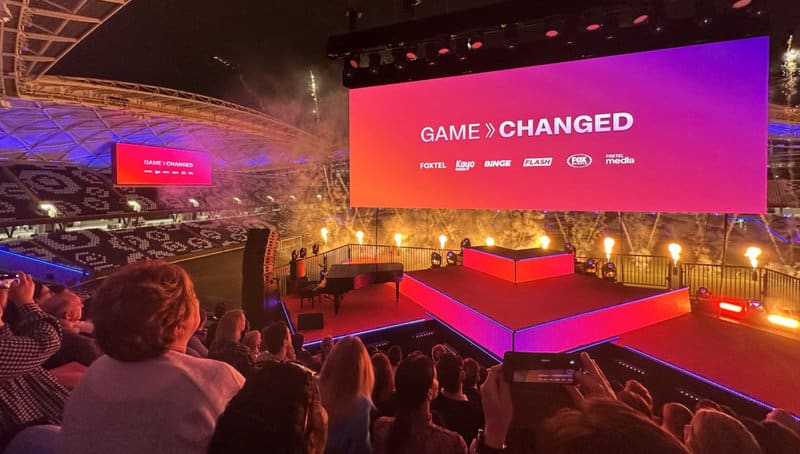
Is Foxtel set up and ready for a successful 2023?
Formosa Morgan said that from a general programming perspective, she didn’t think Foxtel was much separating the rest of the pack but noted that they are more reliant on international content.
“What has separated them, however, is leveraging what consumers are chasing, e.g. an exclusive sports platform through Kayo, spinning off other entities such as Binge and Flash – all of which are playing to their focus around subscriptions and ultimately audiences,” she pointed out.
For Linnett, he noted that Foxtel appeared confident and future-fit for what the advertising market needs as they move towards the next stage of TV digitisation.
“They have secure, in-demand content for Australians, particularly in sport, with a significant investment in tech capabilities to stay competitive with the global streaming giants.”
Linnett added that Foxtel defined the differences between their ad experience and free-to-air TVs by highlighting lighter ad load and frequency management tech in its BVOD environment, which provides 1.5 times better spontaneous ad awareness than FTA.
“In contrast to their scale ambitions, their intentions of working more intimately with marketers were clear, with much focus on DE&I and sustainability practices woven into negotiations as well as encouraging the market experiment alongside their business with Foxtest,” he added.

Mat Linnett
McKiernan noted that Foxtel’s strength was in their access to premium content at scale, combined with their focus on streaming services.
“This, coupled with their access to strong first-party data, allows advertisers to deliver scalable campaigns directly to their target market, leveraging the impact of video,” she said.
Keith noted that the presentation mentioned a significant spend on technology: “details of what it will deliver for advertisers were less clear.”
“But if it continues to drive consumer take-up, minimise churn and maintain the impressive stat that there is a Foxtel product in 50% of Aussie homes, job done,” she added.
Investing in content
In terms of Foxtel’s investment in content, Formosa Morgan said that, unlike the other networks’ upfronts, it was not front and centre of its presentation.
Aside from Foxtel’s key locally produced shows and the announcement of the drama Strife:” “there wasn’t too much new content in the slate.”
“As per every Australian network, they’re also moving into the dating arena with F Boy Island Australia, which like the rest of them, will no doubt pull in audiences on BVOD.
Formosa Morgan added that Foxtel was: “super quick to talk about the impressive audience numbers for the launch of this season’s House of the Dragon. But they didn’t mention whether or not it was returning next year – which from what I gather, is not and will leave a big gap in their schedule.”
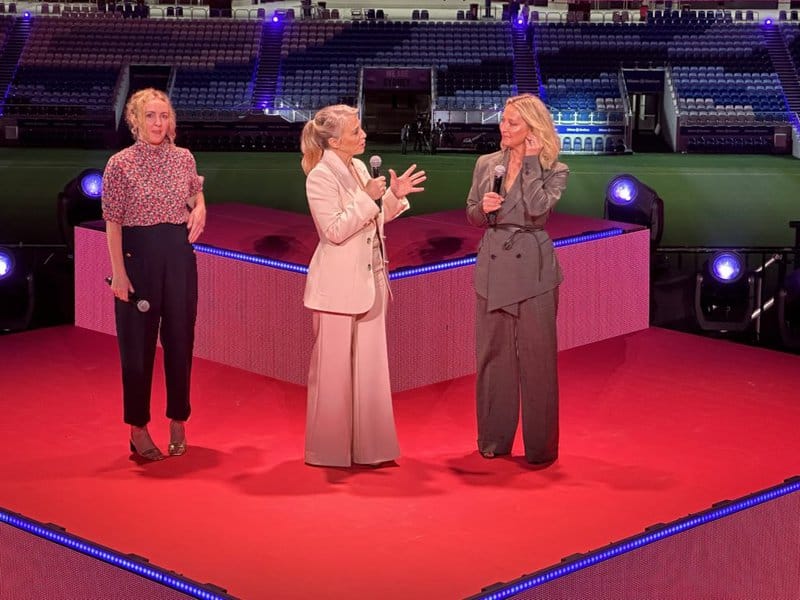
Amanda Laing with Sarah Scheller and Asher Keddie
For Linnett, he highlighted Foxtel’s programming strengths were with sports. Specifically, two T20 World Cups and the security of 9 more years of AFL, which he said: “provides confidence in the market that Foxtel and Kayo will continue to be Australia’s place for sport in the new streaming era.”
McKiernan said that with HBO within their suite: “Foxtel will always be able to deliver high-quality content to Australians, and a lot of it. This provides scale for advertisers within shows and contents our key audiences are watching/bingeing.”
Keith noted that the pay-tv platform addressed its standing as a technology-led company with financial strength that enables quality HBO content, such as Euphoria and Succession, and premium local content, including Selling Houses Australia and Gogglebox.
Keith also said the new drama Strife, which is currently in pre-production, demonstrates Foxtel’s continued investment in homegrown talent.
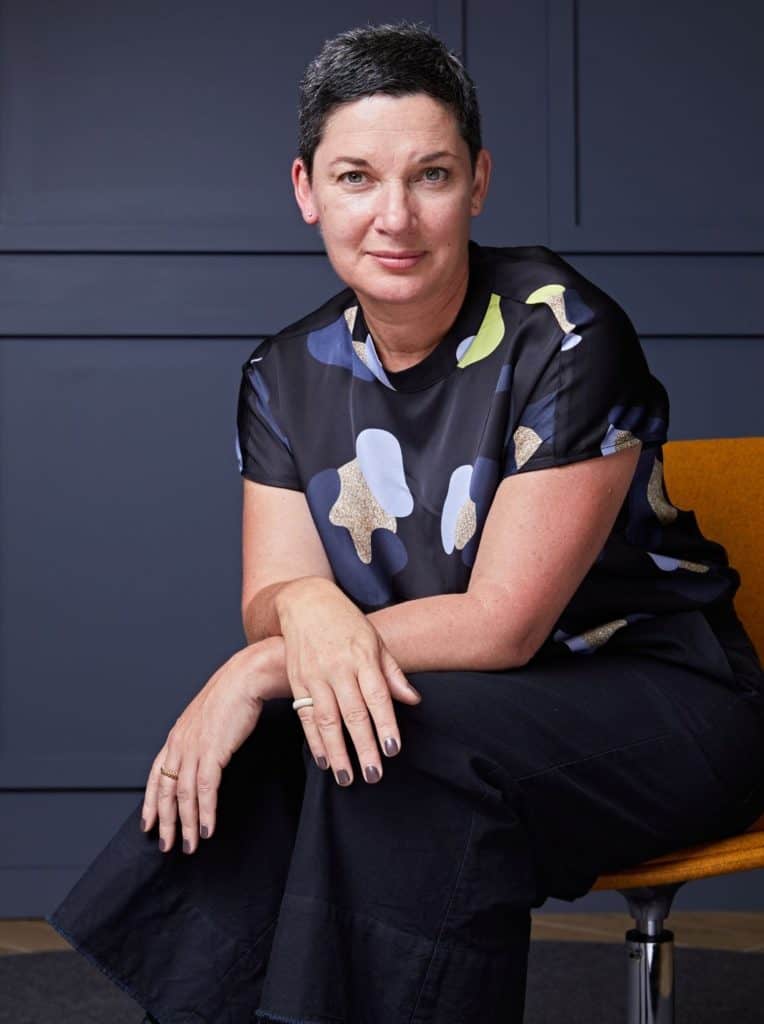
Sarah Keith
Attracting media buyers big bucks
Formosa Morgan said that opening Binge to advertising is an attractive proposition when it comes to attracting media buyers.
Formosa Morgan explained that it makes the video playing field more competitive in the year ahead and: “increases Foxtel’s scale and offers advertisers a more consistent and steady BVOD profile across the course of the year.”
Formosa Morgan highlighted the “minimal investment” in sponsoring women’s sporting events. She said it “should hopefully make the industry lean in and drive greater change there.”
Linnett noted that Foxtel has long pioneered innovation and has done so with a 12-month demonstration of the value of Foxtest.
“Their partnership with Amplified Intelligence and measuring attention will garner more advertiser participation in 2023,” he added.
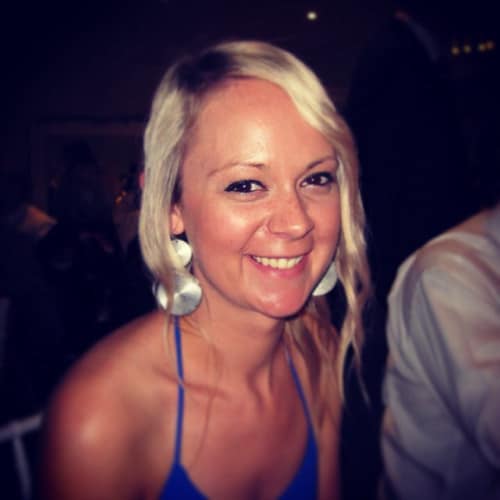
Rebecca McKiernan
McKiernan agreed that the announcements would attract media buyer dollars. She said: “With the promise of a better user experience and frequency control across the incoming Binge Ads, this offering becomes very enticing to media buyers working in the BVOD/SVOD space.”
“We expect Binge Ads to become an important piece of the everchanging BVOD/SVOD landscape once it has launched,” she added.
But, Keith noted one drawback. “The only poor shot played was the insistence on stressing the benefit of Foxtel’s ad model over others’ ‘business models’ just before introducing the new opportunity to advertise on Binge,” she said.
“While Foxtel is a world expert on managing an ad-supported premium subscription model and will undoubtedly deliver a quality experience on Binge, one questions the need to strongly criticise others,” she pointed out.
An uptick in advertising spend
With Foxtel’s announcements, each shared what for them might move the needle on the amount advertisers spent.
For Formosa-Morgan, she said: “I think Binge launching an ad-funded model will be interesting and could potentially help steer conversations somewhat.”
Linnett reiterated that Foxtest would get attention from advertisers in the year ahead. He said: “I think Foxtel, particularly now, will be in an interesting position for clients looking to test ad formats and other initiatives, such as sponsorship across linear and streaming environments.”
McKiernan said: “Access to Binge advertising is an obvious one, with brands and agencies likely to move budget away from other BVOD/SVOD players to test this new offering.”

Upright’s Tim Minchin closing the Foxtel Upfront presentation
–
Top image: Lucy Formosa, Mat Linnett, Sarah Keith and Rebecca McKiernan
